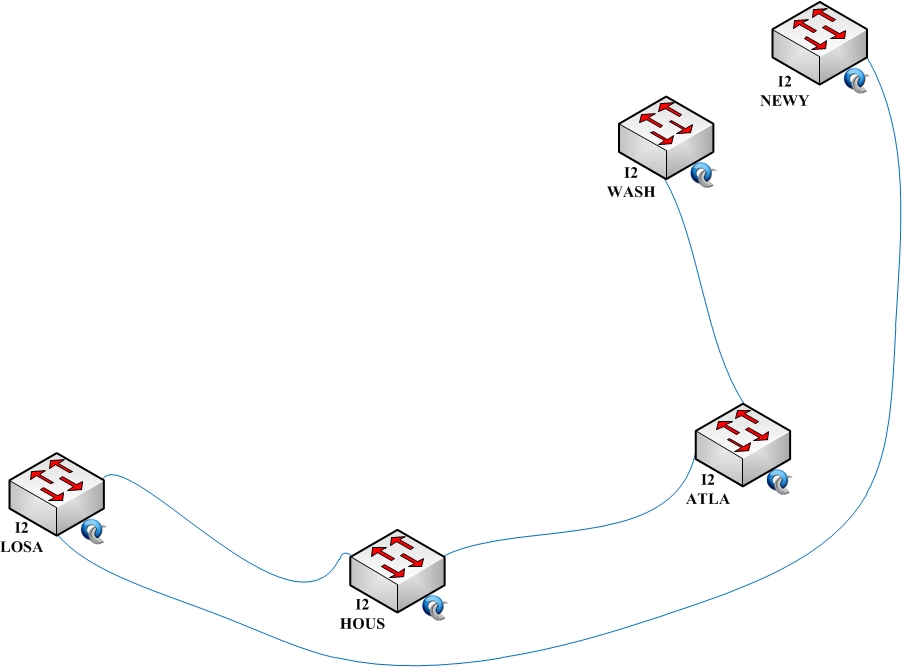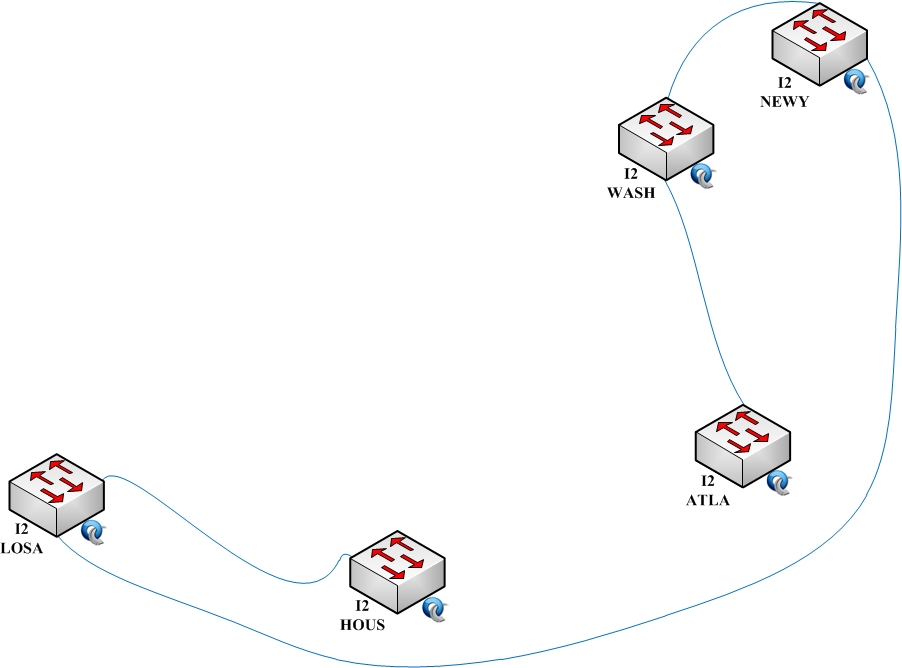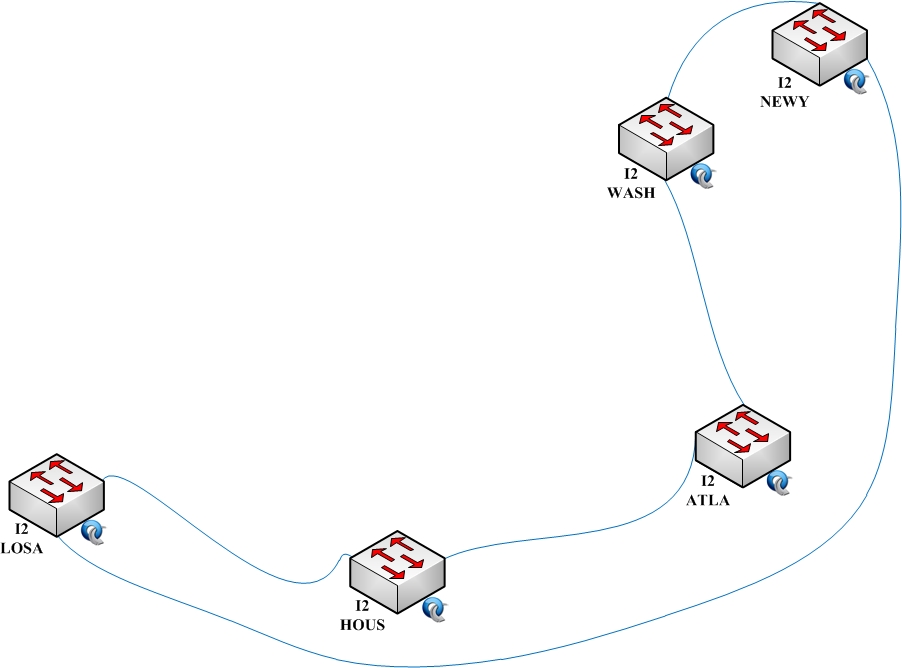| Version 52 (modified by , 10 years ago) (diff) |
|---|
NOTE: NLR is in the process of being shut down. GENI has moved connections off of NLR, but we are in the process of updating documentation.
The current GENI network core is a set of OpenFlow-capable switches in Internet2.
There are currently three standing backbone interconnect VLANs (3715, 3716, and 3717) carried on the five switches in the core, which are located in the five cities shown on the maps below. Two of the VLANs are topologically a broken ring (to help prevent accidental loops). The third VLAN (3717) is a ring. The gap in each of the broken-ring VLANs is between two different links, to provide either a longer or shorter path through the core between two switches. The three VLANs are not interconnected in the core, and should not extend beyond the backbone providers into regionals or campuses.
VLAN 3715
VLAN 3716
VLAN 3717
Testing / monitoring
The core network status page at BBN shows whether a test host at BBN can ping the other test hosts right now.
Backbone Integration
Click the picture below for the full-sized image.
Note: Network Diagrams maintained by GMOC, historical revisions can be found here - http://gmoc.grnoc.iu.edu/gmoc/file-bin/geni-network-diagram.html
VLAN Translation
The shared mesoscale VLAN in the core uses loopback cables for VLAN translation where needed. Some of those VLANs are not experimenter controlled, but rather are used for isolated transport to a specific site. On the Internet2 core switches, the Layer1Transport software is used to pass that traffic along at layer 1, similar to how a psuedowire would work.
Attachments (17)
-
OF-INT-BB--11-Apr-2011.png (486.7 KB) - added by 13 years ago.
Openflow Core deployment map showing switchports and backbone integration
- OF-INT-BB 18-May-2011.png (584.4 KB) - added by 13 years ago.
- OF-INT-BB_18-May-2011.pdf (72.4 KB) - added by 13 years ago.
-
OF-INT-BB 25-May-2011.png (584.3 KB) - added by 13 years ago.
new backbone diagram for May 25, 2011
-
OF-INT-BB 25-May-2011.pdf (72.3 KB) - added by 13 years ago.
new backbone diagram for May 25, 2011
-
OF-INT-BB 10-May-2011.png (245.4 KB) - added by 13 years ago.
adding May 10 BB diagram for historical purposes
-
OF-INT-BB 10-May-2011.pdf (72.0 KB) - added by 13 years ago.
adding May 10 BB diagram for historical purposes
- OF-INT-BB 30-Jun-2011.pdf (72.7 KB) - added by 13 years ago.
- OF-INT-BB 30-Jun-2011.png (588.4 KB) - added by 13 years ago.
- geni-core-vlan-3715.png (57.9 KB) - added by 10 years ago.
- geni-core-vlan-3716.png (57.6 KB) - added by 10 years ago.
- geni-core-vlan-3717.png (58.3 KB) - added by 10 years ago.
- geni-core-vlan-3715-v2.jpg (95.3 KB) - added by 10 years ago.
- geni-core-vlan-3716-v2.jpg (93.9 KB) - added by 10 years ago.
- geni-core-vlan-3717-v2.jpg (98.3 KB) - added by 10 years ago.
- OF-INT-BB 28-Mar-2014.pdf (100.6 KB) - added by 10 years ago.
- OF-INT-BB 28-Mar-2014.png (614.1 KB) - added by 10 years ago.




